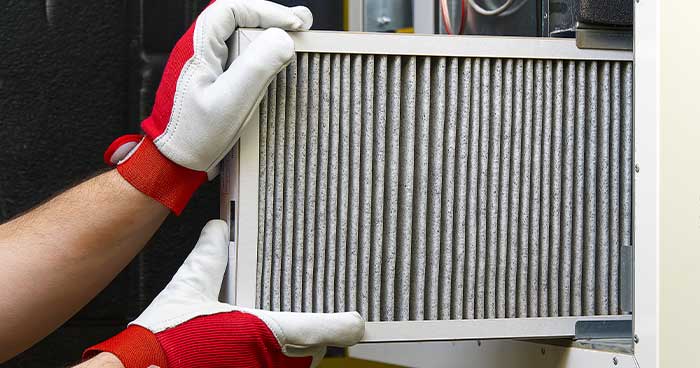Over the years we’ve been to countless homes and looked at just as many HVAC systems. When it comes to facts and fictions about air conditioners, years of experience pay off. Here are four myths we constantly hear and the truth about how an air conditioner works.
Myth #1: My Air Conditioner Can Take Any Heat Load
When the heat is beating down, it can be difficult for an air conditioner to keep up. Also, some homes are more susceptible to frequent overheating than others because they may have leaky ducts and not enough insulation.
Additionally, radiant energy can make significant changes to the indoor heat or a car, or in this case, your home. For example, it can be 95° outside and by the time you arrive home the indoor temperature has risen to 88°.
Because the sun’s rays have heated up your home and its contents, like furniture, it may seem like second nature to blast the AC. However, this is a bad idea, and we’ll explain why.
Fact:
Coming home and forcing your AC to work as hard as it can has the potential to do significant damage to your system. It forces your HVAC system to work overtime, and it doesn’t cool your home any faster.
As ASI, we recommend setting your thermostat to a higher resting temperature when you leave the house. This puts your HVAC system into a “sleep” mode.
When you get home, lower the temperature to 78° to sustainably cool your home. A smart thermostat does wonders to take the guesswork out of this.
Most smart thermostats can talk to your phone. Simply set the thermostat to a cooler temperature when you’re on the way home.
Myth #2: A Lower Number on the Thermostat Means Cooler Air
In addition to overloading your system, setting a very low temperature on your thermostat to cool your home faster actually does nothing to the speed at which your home temperature changes.
Fact:
Most air conditioners can only cool air 15° to 20° at a time. Though this sounds like enough to quickly get the job done, hear us out.
If the inside temperature is 80°, only a bit of that 80° air is pulled into your HVAC system at a time. After the AC treats your air, that little patch of now cool air is released into your home.
The cool air mixes back into the 80° ambient air. Your home isn’t getting cool after one pass of air, it takes more than a few minutes to fully temperature treat your home.
Myth #3: I Don’t Need to Change the Air Filter
Air filters play two critical roles. The first is that they keep dust and other debris from settling in your HVAC system. Too much dust can clog the furnace’s ignitors and even buildup in your condensate drain pan.
An air filter’s second job is to make sure indoor air contaminates aren’t recycled into your home. Most filters pull dust, dander, allergens, and other larger particles out of the air. Other air filters are so strong they can trap mold spores and viral molecules.
Fact:
If an air filter is too full, you run the risk of harming your system and even your health. An overfull filter is unable to catch dust or anything else for that matter.
This means you’re breathing in all the dust around your home and anything that comes in when you open the window. Additionally, when an air filter is too full it can do serious harm to your HVAC system.
We’ve even seen entire systems fail because of an air filter. However, there’s an easy fix to this problem.
Simply change the air filter twice per year. Once in the spring before AC season and once in the fall before furnace season.
Don’t forget to check it once per month if you can. Things like fires or construction can send more debris than usual through the air, which can clog your system.
Can’t access your furnace? Just ask an HVAC tech to do it for your during a routine tune-up.
Myth #4: The AC System is an Open System
Contrary to popular belief, refrigerant is not like oil. You do not need to top it off. Everything in your AC runs on a closed system. Therefore, you won’t need to ask for refrigerant to be topped off.
Fact:
Unless you have a leak or tear in your refrigerant line, you won’t need a refrigerant refill. This is only in perfect situations though.
Since condensers live outside, they are subject to weather and wild animals. Even a raccoon, skunk, or squirrel and chew at the line.
During a routine tune-up, our techs will check your refrigerant levels and let you know if anything looks off.










